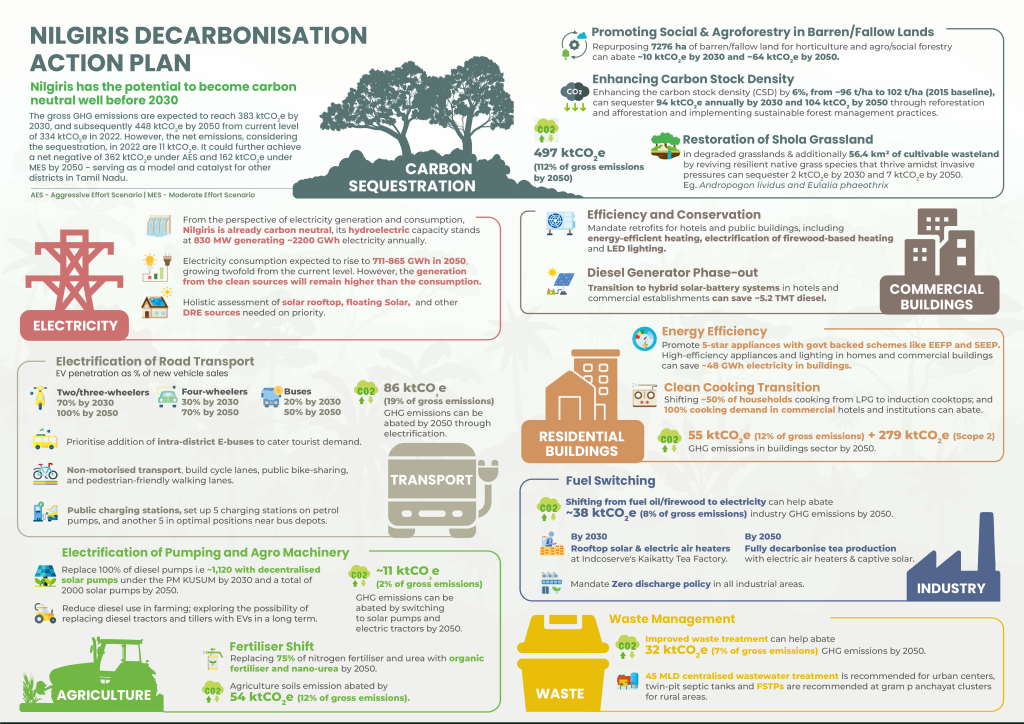
The Nilgiris district, part of the Nilgiris Biosphere Reserve in the Western Ghats, is rich in biodiversity and home to a wide range of exotic and endangered flora and fauna. The region is renowned for its tea, spices, and a diverse mix of commercial horticulture crops, enabled by its high altitude (~2,000 m) and temperate climate. The district’s unique physio-climatic features – steep terrain, abundant rainfall, and perennial streams – have made the district a strategic location for hydropower generation, with small and medium-scale projects having an installed capacity of ~830 MW, contributing significantly to Tamil Nadu’s non-fossil electricity generation.
Further, Nilgiris is a major tourism hub with an annual tourist count of 2.5 million across Ooty, Coonoor, Kotagiri and other hill stations (2022-2024). It faces the challenge of local environmental degradation and increased emissions driven by higher transportation and electricity needs by tourists. Other issues include increased use of nitrogen fertiliser and land-use changes driven by increasing developmental pressures.
However, the pristine forest and shola grasslands offer a huge potential for sequestering carbon. This along with climate smart initiatives that are recommended in this action plan can chart a pathway for the district to become carbon neutral by 2028, contributing further towards Tamil Nadu’s vision of becoming carbon neutral well before 2070.






